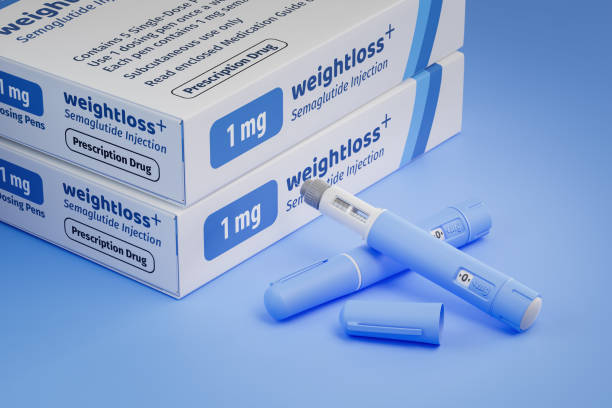719.867.5389
719.867.5389

In recent years, Ozempic has taken center stage in conversations around weight loss, type 2 diabetes, and even broader health benefits. Whether you’re curious about how it supports blood sugar control or why it’s being widely used for shedding pounds, this guide from Dosepop breaks down how Ozempic works, the science of GLP-1 receptor agonists, and what makes this medication different from traditional treatments.
Ozempic is a prescription medication that contains semaglutide, a GLP-1 receptor agonist approved by the FDA to help manage blood sugar in adults with type 2 diabetes. More recently, it’s gained attention for its powerful weight loss effects, even in non-diabetic patients when used off-label.
GLP-1 stands for glucagon-like peptide-1, a natural hormone your body releases after eating. This hormone helps regulate blood sugar by:
Stimulating insulin production when blood sugar is high
Suppressing glucagon (a hormone that raises blood sugar)
Slowing gastric emptying to increase feelings of fullness
Acting on the brain to reduce appetite
GLP-1 receptor agonists, like semaglutide in Ozempic, mimic this natural hormone but remain active longer, leading to more sustained effects.
This class of drugs is not just for blood sugar control anymore—they’re proving to be game-changers in obesity treatment, cardiovascular health, and possibly even cognitive health.
Managing type 2 diabetes involves keeping blood glucose levels within a safe range while minimizing insulin resistance. Ozempic assists with this by:
Boosting insulin secretion only when blood sugar is elevated
Suppressing glucagon, reducing liver glucose output
Delaying digestion, reducing post-meal glucose spikes
Improving beta-cell function over time
These combined effects lead to improved A1C levels, reduced insulin dependency, and in some cases, even diabetes remission. For patients already on metformin or other oral medications, Ozempic is often added to achieve better control with minimal risk of hypoglycemia.
Even though Ozempic was initially designed for diabetes, many people are turning to it for medical weight loss due to its appetite-suppressing effects.
Here’s how it contributes to weight loss:
Reduces appetite: By acting on appetite control centers in the brain
Increases satiety: People feel full longer, eating fewer calories
Reduces cravings: Particularly for high-calorie or sugary foods
Improves portion control: Slower gastric emptying delays hunger
In clinical studies, patients taking Ozempic lost 10–15% of their body weight over 12–18 months—comparable to results seen with bariatric procedures in some cases.
Most people start noticing appetite changes within the first 1–2 weeks. However, substantial weight loss and blood sugar improvements typically occur after 8–12 weeks of consistent use.
Ozempic is taken as a once-weekly injection, with the dosage gradually increased to reduce side effects such as nausea or dizziness.
Several GLP-1 receptor agonists are available, but Ozempic has become the most well-known. Here’s how it compares:
Ozempic (semaglutide): Weekly injection, 0.25 mg to 2 mg dosing. Strong efficacy for both diabetes and weight loss.
Wegovy: Same active ingredient (semaglutide) but specifically approved for weight loss at higher doses (up to 2.4 mg).
Mounjaro (tirzepatide): A dual-action medication that targets both GLP-1 and GIP receptors. Results show even greater weight loss potential.
Saxenda (liraglutide): Daily GLP-1 injection. Less effective than Ozempic, often used when weekly injections aren’t an option.
When compared to traditional weight-loss drugs like phentermine, Ozempic offers a safer, more sustainable method of fat loss without the risks of dependency or cardiovascular issues.
Aside from weight loss and diabetes control, Ozempic has been linked to several other potential benefits:
Reduced cardiovascular risk: Clinical trials show reduced heart attack and stroke incidence in high-risk patients
Lower blood pressure: Many patients see a moderate reduction in systolic pressure
Improved cholesterol levels: GLP-1s can improve LDL and triglyceride profiles
Possible brain health protection: Early studies suggest GLP-1s may reduce the risk of Alzheimer’s and cognitive decline
Like all medications, Ozempic comes with potential side effects. The most common include:
Nausea
Vomiting
Diarrhea or constipation
Fatigue
Mild injection site irritation
These side effects are usually temporary and improve as your body adjusts. Rare but serious risks include pancreatitis and thyroid tumors, so Ozempic should not be used in people with a personal or family history of medullary thyroid carcinoma.
You may be a good candidate for Ozempic if you:
Have type 2 diabetes with poor A1C control
Are overweight or obese with a BMI over 27 and related conditions
Have struggled with appetite regulation
Are you looking for an alternative to bariatric surgery
Prefer weekly injections over daily medication
Dosepop offers virtual consultations and personalized programs for those seeking GLP-1 weight loss treatments. We evaluate your health history, goals, and lifestyle to match you with the right solution.
At Dosepop, we make access to Ozempic safe, simple, and convenient. Here’s how:
Online Intake – Submit your medical history and goals securely
Virtual Consultation – Meet with a licensed provider
Lab Testing – We verify your candidacy and rule out risks
Ongoing Monitoring – Regular follow-ups and dose optimization
Whether you’re seeking to lower your blood sugar or finally reach your weight loss goals, Dosepop delivers science-backed support from start to finish.
Ozempic is more than just a trend—it’s a scientifically proven therapy that has revolutionized how we approach metabolic health. With benefits that span beyond diabetes and weight loss, it’s no surprise that this GLP-1 therapy is making headlines and helping people change their lives.
Ready to learn more or see if you qualify? Visit Dosepop’s weight loss page and take your first step toward a healthier future.
Simplify your skincare routine with science-backed, effective products recommended by the Dosepop medical team.



